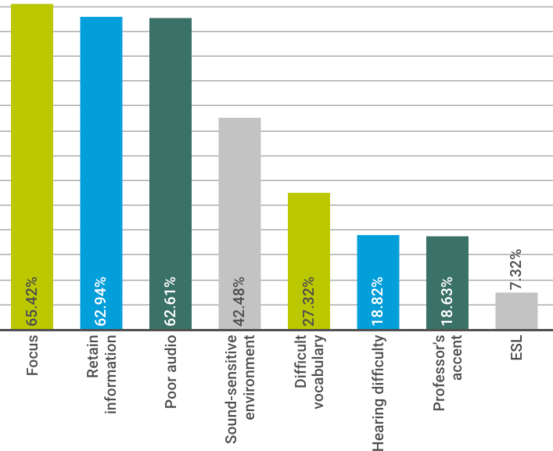 A curb cut.
A curb cut.
Behold, the curb cut: a wedge cut in an elevated curb to allow smooth passage between the sidewalk and the street.
They were originally designed to make public streets accessible to wheelchair users. (One of the first curb cuts in the U.S. was installed in Michigan in 1945, to help disabled World War II veterans). Today, everyone benefits, whether or not they have a physical disability.
If you?ve ever pushed a stroller, carried heavy bags, had joint pain, walked with crutches or a cane, or stumbled around drunk, curb cuts have helped you. When I suffered from a long bout of knee tendinitis that made walking on uneven surfaces (like stairs) painful, curb cuts made walking around more bearable.
The history of curb cuts teaches us two important principles.
1. Technology designed for disabled people can help everyone.
This is called the ?curb cut effect,? and advocates for people with disabilities talk about it a lot. The idea that things that help people with disabilities can benefit everyone inspired the field of ?universal design,? where buildings and objects are designed to be as usable as possible for everyone, regardless of age or ability.
2. When assistive technology becomes sufficiently ubiquitous and widely used, it is no longer considered assistive technology. It becomes ?normal.?
Because curb cuts are so ubiquitous, they are no longer branded as ?assistive technology,? and we forget their origins as accommodations for disabled people.
Curb cuts are the best examples of these principles, but they apply more broadly. Furthermore, not only are devices for disabled people likely to make tasks easier for abled people, but also, labor-saving devices help disabled people even more than the general population. What merely makes a task easier for someone without disabilities can make it possible for someone with disabilities.
Moreover, these principles apply not only to assistive technology that helps with physical movement, but also that which helps with sensory processing and cognition.
For example, closed captions and transcripts were designed to help deaf people understand movies without needing to hear the dialogue and sound effects. It doesn?t take much imagination to see how it can help hearing people with auditory processing difficulties, people who like to talk during films, or people trying to watch TV in noisy bars. Yet some people without these challenges find closed captions annoying and turn them off.
Turns out, those people are missing out.
Given how vocal anti-captions people can be, one might expect college and university students without disabilities to dislike closed captions or transcripts, whether or not these benefit their learning. But in fact, a large nationwide survey found that almost all students believed that captions helped them.
Oregon State University and 3Play Media surveyed 2,124 students from 15 public and private universities across the United States. (A summary and full report of the findings can be found here). These included both undergraduate and graduate students, and most attended public, four-year schools.
Almost all students (98.6%) said captions are helpful.
Almost three quarters of the students (71%) reported using captions in face-to-face and online classrooms, and 85% said they used video transcripts.
Interestingly, the most common reason for using captions was as a ?learning aid? (76%) as opposed to poor audio or video quality (22%), the instructor?s accent (8%), convenience (5%) or disability accommodations (6%).
Specifically, over half of students (51.9%) thought captions improved comprehension, over a third (33.4%) thought they improved accuracy, a fifth (20.2%) thought they fostered engagement, and 15% thought they improved retention of class content. Of students who chose to use captions, almost 2/3 did so to help focus, 63% did so to better retain information, and 27% did so because of difficult vocabulary. Many fewer students used captions because of a hearing difficulty (18.8%).
 Whether or not they had disabilities, students used captions to improve focus, memory, and comprehension of difficult vocabulary. Educational reasons ranked far ahead of disability-related reasons for using captions.
Whether or not they had disabilities, students used captions to improve focus, memory, and comprehension of difficult vocabulary. Educational reasons ranked far ahead of disability-related reasons for using captions.
Not surprisingly, 2/3 (66%) of ESL (English as a second language) students found captions ?very? or ?extremely? helpful.
Students used transcripts for different reasons than captions, but still found them helpful for educational more than disability reasons. Almost half used them as study guides (47.3%) to find information (46.3%) or to retain information (46.3%), over a third used them to maintain focus, and almost 1 in 5 used them to deal with difficult vocabulary. Students were much less likely to use transcripts because of a hearing difficulty (12.3%).
Most of these students who used assistive technology as a learning tool did not have disabilities. Only 13% of these students had registered with an office of disability service, and fewer than 12% required academic accommodations. More students reported problems with hearing (19%) and vision (37%), but still a minority of those surveyed.
In spite of these results, students did not necessarily have frequent, easy access to these assistive technologies. More than one quarter of participants were unsure whether closed captions were available, and almost 20% were unsure whether video transcripts were available. Some 15% didn?t know how to tell whether a video has captions. These findings are worrisome because universities receiving federal funding are legally required to make any videos used accessible.
This study provides a small piece of evidence that closed captions and transcripts of video are like curb cuts in that they help people with and without disabilities.
(More convincing evidence would test performance of students who did and did not use closed concepts and transcripts, and find that students who used these technologies performed better. Test scores would be easiest, but one could also, say, use questions to test comprehension of a reading passage, or score short written explanations of a topic).
However, it shows an important difference between these assistive technologies and curb cuts: they are seen as an assistive technology, and are provided only for students with disabilities rather than made widely available. When technologies are seen as ?for people with disabilities,? this creates a stigma, because most people don?t want to be associated with disabilities, or look as if they are disabled because of the technology they use. (The blind writer Will Butler persuasively argues that looking like assistive technology may have contributed to the demise of Google glass).
The researchers appreciate this difference between captions and curb cuts, and hope to help change it:
?Many people associate the use of closed captions and transcripts only with disability accommodation, and that can mean they are not made widely available,? said Katie Linder, director of the Oregon State University Ecampus Research Unit and author of the study. ?One hope for this study was to help educate university administrators about how a range of students are using these tools, and that making them more available could help more learners.?
So what could be done to make closed captions and transcripts completely like curb cuts?
We would need to destigmatize these technologies, communicate that they are for everyone, not ?just for people with disabilities,? and make them effortlessly available everywhere, just as curb cuts are.

